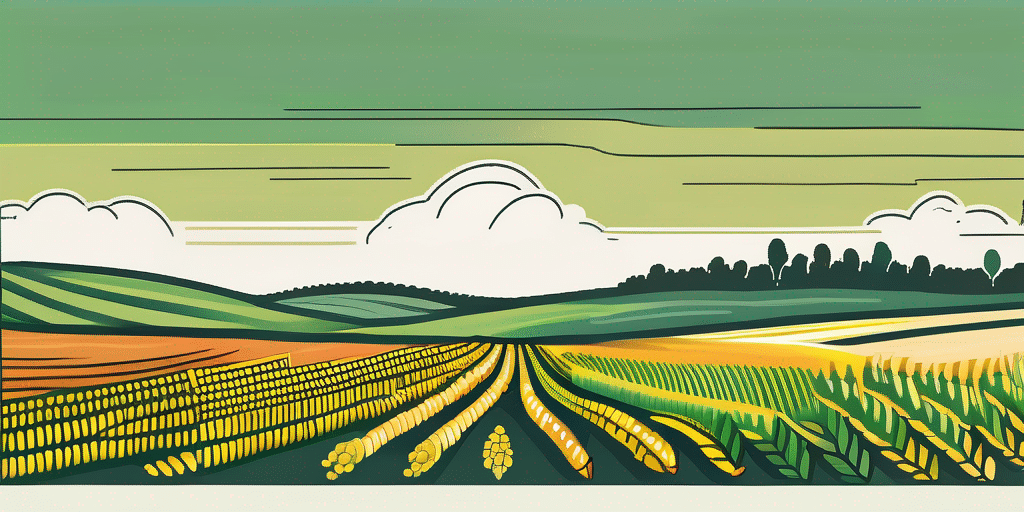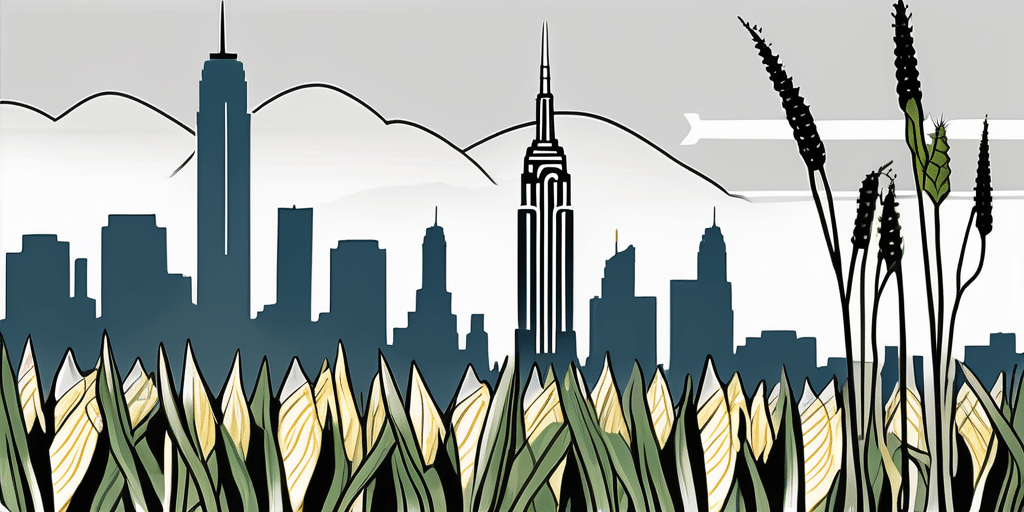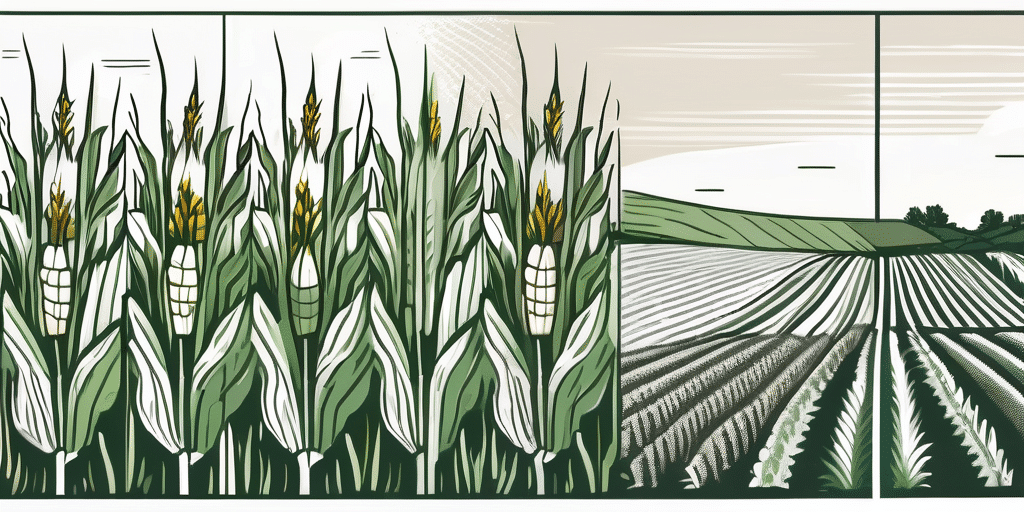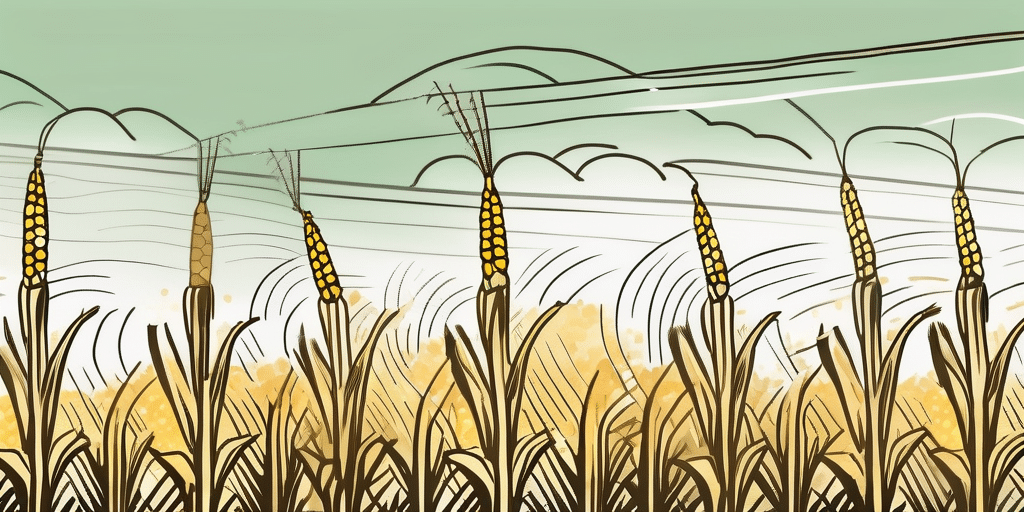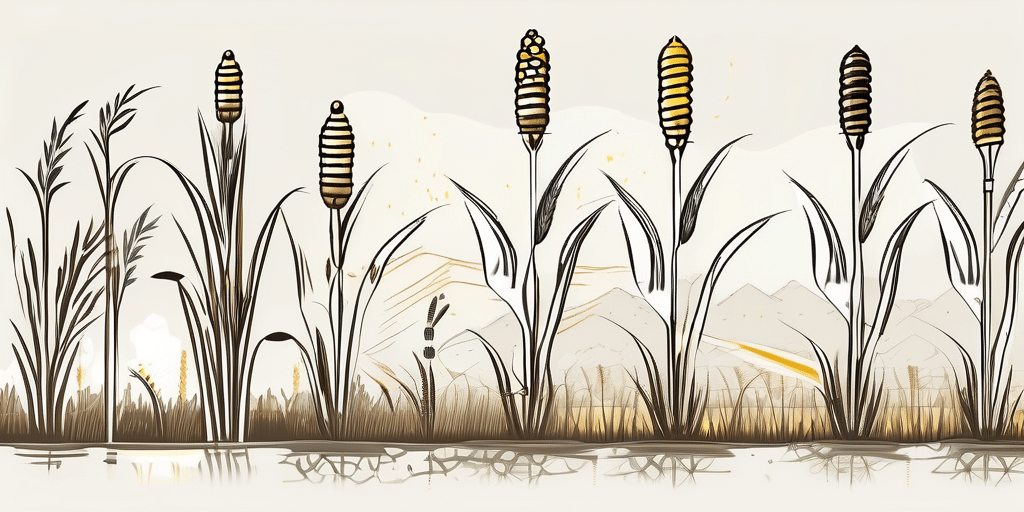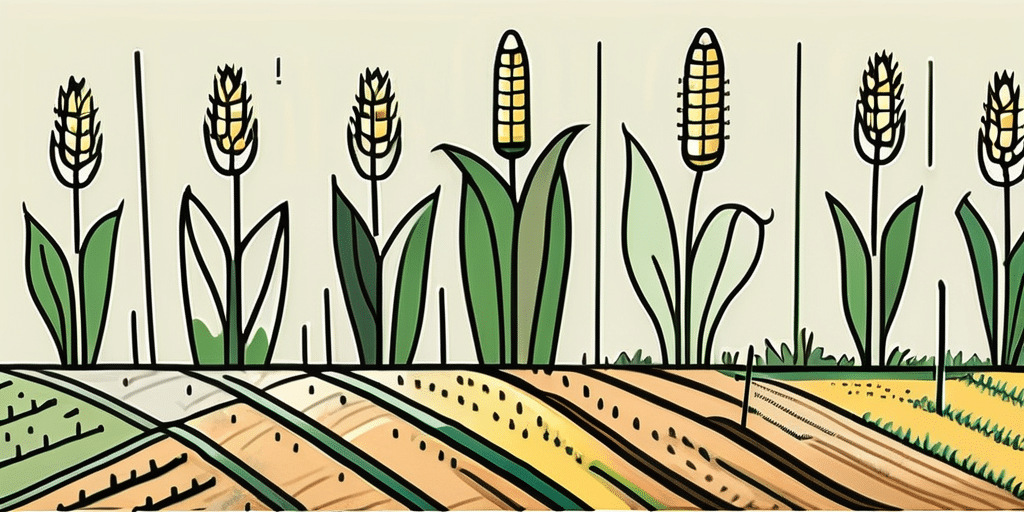Are you interested in growing fresh, delicious corn right in your own backyard, but lacking the space for a traditional garden? Don’t worry! With the right techniques, you can successfully grow Ruby Queen Corn in containers and pots. In this article, we will guide you through the process of growing this tasty variety of corn, from understanding its characteristics to harvesting and storing your crop.
Understanding Ruby Queen Corn
Before we delve into the growing process, let’s take a moment to understand what makes Ruby Queen Corn special. This variety is known for its deep red kernels and incredible sweetness. If you’re a corn lover, you’ll definitely want to give Ruby Queen a try!
Characteristics of Ruby Queen Corn
Ruby Queen Corn is a mid-season variety that typically reaches a height of around 6-7 feet. It produces vibrant red cobs filled with juicy, crisp kernels. This variety is known for its excellent flavor and tenderness, making it a favorite for both fresh eating and canning.
Ideal Growing Conditions for Ruby Queen Corn
To grow healthy and flavorful Ruby Queen Corn, you need to provide it with the right growing conditions. Here are a few key factors to consider:
- Sunlight: Corn plants thrive in full sun, so choose a location that gets at least 6-8 hours of direct sunlight per day.
- Temperature: Ruby Queen Corn prefers average temperatures between 65-85°F. Avoid planting when the soil temperature is below 50°F, as this can stunt the growth of the seedlings.
- Soil: Corn plants require well-draining soil with a pH level of 6.0-7.0. Before planting, amend your soil with organic matter to improve its fertility and drainage.
- Water: Adequate moisture is crucial for corn plants, especially during the pollination period. Make sure to provide consistent watering, aiming for around 1 inch of water per week.
Now that we’ve covered the basic growing conditions, let’s dive deeper into the fascinating life cycle of Ruby Queen Corn. From seed to harvest, this corn variety goes through several stages, each with its own unique characteristics.
The first stage is germination, where the seed absorbs water and begins to sprout. This process usually takes about 7-10 days, depending on the temperature and moisture levels. Once the seedling emerges from the soil, it enters the vegetative stage.
During the vegetative stage, the corn plant focuses on growing its leaves and stem. It develops a strong root system to support its future growth. This stage lasts for about 30-45 days, during which the plant reaches its maximum height.
Next comes the reproductive stage, where the corn plant starts producing tassels and silks. The tassels are the male flowers, while the silks are the female flowers. These flowers play a crucial role in pollination, as the pollen from the tassels needs to reach the silks for fertilization to occur.
After successful pollination, the fertilized silks develop into kernels, and the corn cob begins to form. This stage is known as the grain filling stage and lasts for about 20-25 days. The kernels start off small and milky, but as they mature, they become plump and filled with sugars.
Finally, the corn reaches maturity, and it’s time for harvest. You can determine if the corn is ready by gently pressing a kernel with your fingernail. If a milky substance oozes out, it’s a sign that the corn is ripe and ready to be picked.
As you can see, growing Ruby Queen Corn is not only about providing the right conditions but also witnessing the incredible journey of a tiny seed transforming into a delicious and vibrant corn cob. So, roll up your sleeves, get your hands dirty, and embark on this rewarding gardening adventure with Ruby Queen Corn!
Preparing for Planting
Now that you have a good understanding of Ruby Queen Corn, it’s time to prepare for planting. Follow these steps to ensure a successful start.
Before diving into the planting process, it’s important to note that Ruby Queen Corn is a sweet and tender variety that thrives in warm weather. This corn variety is known for its vibrant red kernels and exceptional flavor, making it a popular choice among home gardeners and farmers alike.
Choosing the Right Container
When growing corn in containers, it’s important to select the right-sized container. A container with a minimum depth of 12 inches and a diameter of 18 inches is ideal. Make sure the container has adequate drainage holes to prevent waterlogging.
Additionally, consider the material of the container. Opt for containers made of durable materials like plastic or ceramic, as they provide good insulation for the roots and can withstand the weight of the growing corn plants.
Selecting Quality Soil
Fill your chosen container with high-quality potting soil that is well-draining and rich in organic matter. Avoid using regular garden soil, as it tends to be too heavy and compact for container gardening.
Consider amending the soil with compost or well-rotted manure to provide essential nutrients for the corn plants. This will help promote healthy growth and ensure a bountiful harvest of delicious Ruby Queen Corn.
Proper Seed Selection and Germination
- Choose certified organic Ruby Queen Corn seeds from a reputable supplier. Organic seeds ensure that you’re starting with a healthy foundation for your plants.
- Start your seeds indoors 2-3 weeks before your last frost date. Fill seed trays or small containers with moistened seed-starting mix and plant the seeds about 1 inch deep.
- Keep the seeds warm and moist, ideally at a temperature of 70-75°F. Once the seedlings emerge, provide them with a good source of light, such as a fluorescent grow light or a sunny window.
- After the danger of frost has passed and the seedlings have reached a height of 4-6 inches, they are ready to be transplanted into their containers.
Remember to water your corn plants regularly, ensuring the soil remains consistently moist but not waterlogged. With proper care and attention to detail, you’ll soon be enjoying the sweet, flavorful harvest of Ruby Queen Corn from your own container garden.
Planting Process for Ruby Queen Corn
Now it’s time to plant your well-nurtured seedlings into their containers. Follow these steps for optimal planting:
Before you begin the planting process, it’s essential to understand the ideal conditions for Ruby Queen Corn to thrive. This corn variety requires full sun to grow successfully, so choose a spot that receives at least 6-8 hours of sunlight per day. Additionally, ensure that the soil is well-draining to prevent waterlogging, which can lead to root rot.
Planting Depth and Spacing
- Before transplanting, make sure to harden off your seedlings by gradually exposing them to outdoor conditions over the course of a week.
- Choose a sunny spot for your containers and dig a hole deep enough to accommodate the root ball of each seedling. Space the plants about 12 inches apart to allow for proper air circulation.
- Place each seedling in the hole and gently cover the roots with soil, firming it around the base of the plants.
When planting your seedlings, ensure that the soil is rich in organic matter to provide essential nutrients for the growing plants. You can amend the soil with compost or well-rotted manure to improve its fertility and structure, promoting healthy root development and robust growth.
Watering and Fertilizing Requirements
To promote steady growth and healthy development, you need to provide your corn plants with regular watering and nutrition.
- Water your Ruby Queen Corn plants deeply once or twice a week, making sure the soil is thoroughly moistened.
- Apply a balanced fertilizer that is rich in nitrogen, phosphorus, and potassium when the plants are about 12 inches tall. This will provide the necessary nutrients for optimal growth.
Proper watering is crucial for the success of your corn crop. During hot and dry periods, increase the frequency of watering to prevent the soil from drying out. Mulching around the base of the plants can help retain soil moisture and reduce weed competition, ensuring that your Ruby Queen Corn plants have access to the resources they need to flourish.
Ongoing Care for Ruby Queen Corn
Growing Ruby Queen Corn requires a bit of ongoing care to ensure a bountiful harvest. Let’s explore the key aspects of caring for your plants.
When it comes to tending to your Ruby Queen Corn, there are additional factors to consider beyond the basics. Understanding the nuances of your specific growing environment can make a significant difference in the health and productivity of your corn plants. Let’s delve deeper into some advanced care tips to help you cultivate thriving crops.
Sunlight and Temperature Needs
Make sure your containers are placed in a sunny location with at least 6-8 hours of direct sunlight per day. Corn plants also require warm temperatures to thrive, so monitor the temperature and protect the plants from unexpected frosts.
Furthermore, it’s essential to be mindful of the microclimate in which your corn is growing. Factors such as heat retention in urban areas or cooling effects near bodies of water can impact the temperature experienced by your plants. Consider using techniques like mulching or row covers to regulate soil temperature and protect your corn from temperature fluctuations.
Pest and Disease Management
Like any garden plants, corn is susceptible to pests and diseases. Here are a few common issues and how to manage them:
- Corn Earworms: Monitor your plants regularly and handpick any worms you find. Alternatively, you can apply an organic pesticide to control the infestation.
- Root Rot: Avoid overwatering your corn plants, as excessive moisture can lead to root rot. Ensure proper drainage and water only when the top inch of soil feels dry.
Moreover, fostering a diverse ecosystem in your garden can naturally help manage pests. Planting companion plants like marigolds or dill can attract beneficial insects that prey on common corn pests, reducing the need for chemical interventions. Additionally, practicing crop rotation can help disrupt pest life cycles and reduce disease pressure in your corn patch.
Harvesting and Storing Ruby Queen Corn
After patiently waiting for your corn to fully mature, it’s time to enjoy the fruits of your labor! Here’s what you need to know about harvesting and storing Ruby Queen Corn:
Identifying Harvest Time
Ruby Queen Corn is typically ready to harvest 75-85 days after planting. Look for these signs to determine if your corn is ready:
- The silk strands on top of each cob have turned brown and dried out.
- The kernels are plump, fully developed, and release a milky substance when punctured.
Once you’ve identified that your Ruby Queen Corn is ready for harvesting, it’s essential to do so promptly to ensure the best flavor and texture. Harvesting at the right time is crucial for optimal taste and sweetness.
Proper Harvesting Techniques
To harvest your corn, hold the top of the stalk with one hand while gently pulling downward on the ear. Twisting slightly can help detach the ear from the stalk. Avoid jerking or pulling too hard, as this can damage the plant.
It’s important to harvest the corn in the morning when the sugar content is at its peak. This ensures that you enjoy the sweetest and most flavorful corn possible.
Storing and Preserving Your Corn
For the best flavor and texture, it’s recommended to consume fresh corn as soon as possible. However, if you have a surplus, you can store it for a short time using these methods:
- Refrigerator: Place the ears of corn, with their husks intact, in a plastic bag and store them in the refrigerator. They will stay fresh for up to one week.
- Freezing: Blanch the ears of corn in boiling water for 4-6 minutes, then immediately transfer them to an ice bath. Once cooled, remove the kernels from the cob and store them in airtight containers or freezer bags.
When storing corn in the refrigerator, it’s best to keep it away from fruits like apples and tomatoes, as they release ethylene gas, which can cause the corn to spoil more quickly. Proper storage helps maintain the corn’s freshness and flavor for a longer period.
Troubleshooting Common Issues
Even with proper care and attention, you may encounter a few challenges along the way. Here are some common issues and how to address them:
Overcoming Poor Germination
If you notice that only a few seeds have germinated or the germination rate is low, it could be due to various factors such as poor soil preparation, low-quality seeds, or unfavorable weather conditions. To overcome poor germination:
- Ensure that your soil is well-draining and rich in organic matter.
- Source your seeds from reputable suppliers that guarantee high germination rates.
- Consider using a seed-starting mix specifically designed for higher germination success.
Dealing with Pests and Diseases
Pests and diseases can threaten the health of your corn plants. Here are a few common issues and potential solutions:
- Armyworms: Remove any visible armyworms by handpicking and destroying them. You can also introduce natural predators, such as parasitic wasps, to control the population.
- Common Rust: To manage common rust, spray affected plants with a copper-based fungicide. Make sure to follow the instructions on the product label.
Addressing Nutrient Deficiencies
If your corn plants exhibit signs of nutrient deficiencies, it’s vital to address them promptly to ensure optimal growth. Here are a few common nutrient deficiencies and how to treat them:
- Nitrogen Deficiency: Apply a balanced organic fertilizer that is rich in nitrogen and water it into the soil around the base of the plants.
- Phosphorus Deficiency: Incorporate bone meal or rock phosphate into the soil during planting to provide a slow-release source of phosphorus.
Now that you have a comprehensive guide on how to grow Ruby Queen Corn in containers and pots, it’s time to roll up your sleeves and give it a try! Enjoy the process of nurturing your plants and harvesting the sweet rewards.
But wait, there’s more! Let’s dive deeper into the world of corn cultivation. Did you know that corn, also known as maize, is one of the most widely grown cereal crops in the world? It has been cultivated for thousands of years and has played a significant role in the development of human civilizations.
Corn is not only a staple food for many cultures but also a versatile crop with various uses. Apart from being consumed as a vegetable, corn is used to produce a wide range of products, including cornmeal, corn oil, corn syrup, and even biofuels. Its versatility and adaptability make it a valuable crop for both farmers and consumers.
When it comes to growing corn, it’s essential to choose the right variety for your specific needs. There are different types of corn, such as sweet corn, popcorn, and field corn, each with its unique characteristics and uses. Sweet corn is commonly consumed as a fresh vegetable, while popcorn is known for its explosive kernels when heated. Field corn, on the other hand, is primarily used for animal feed and industrial purposes.
As you embark on your corn-growing journey, remember that patience and perseverance are key. Corn plants require consistent care and attention throughout their growth cycle, from planting to harvest. By following the tips and techniques outlined in this guide, you’ll be well-equipped to tackle any challenges that come your way and enjoy a bountiful corn harvest.
Join the How to Grow Everything Community
Ready to take your gardening skills to the next level? Subscribe for free to How to Grow Everything and learn how to build the garden of your dreams! Receive personalized gardening advice tailored to your location, grow zone, and experience level. Enjoy the best gardening tips, special offers, and deals delivered straight to your inbox – no spam, no tricks. Just invaluable insights from our family to yours. With thousands of free growing and gardening articles, we’re here to help you succeed in your Ruby Queen Corn container gardening adventure and beyond. Join us now and start growing everything!

